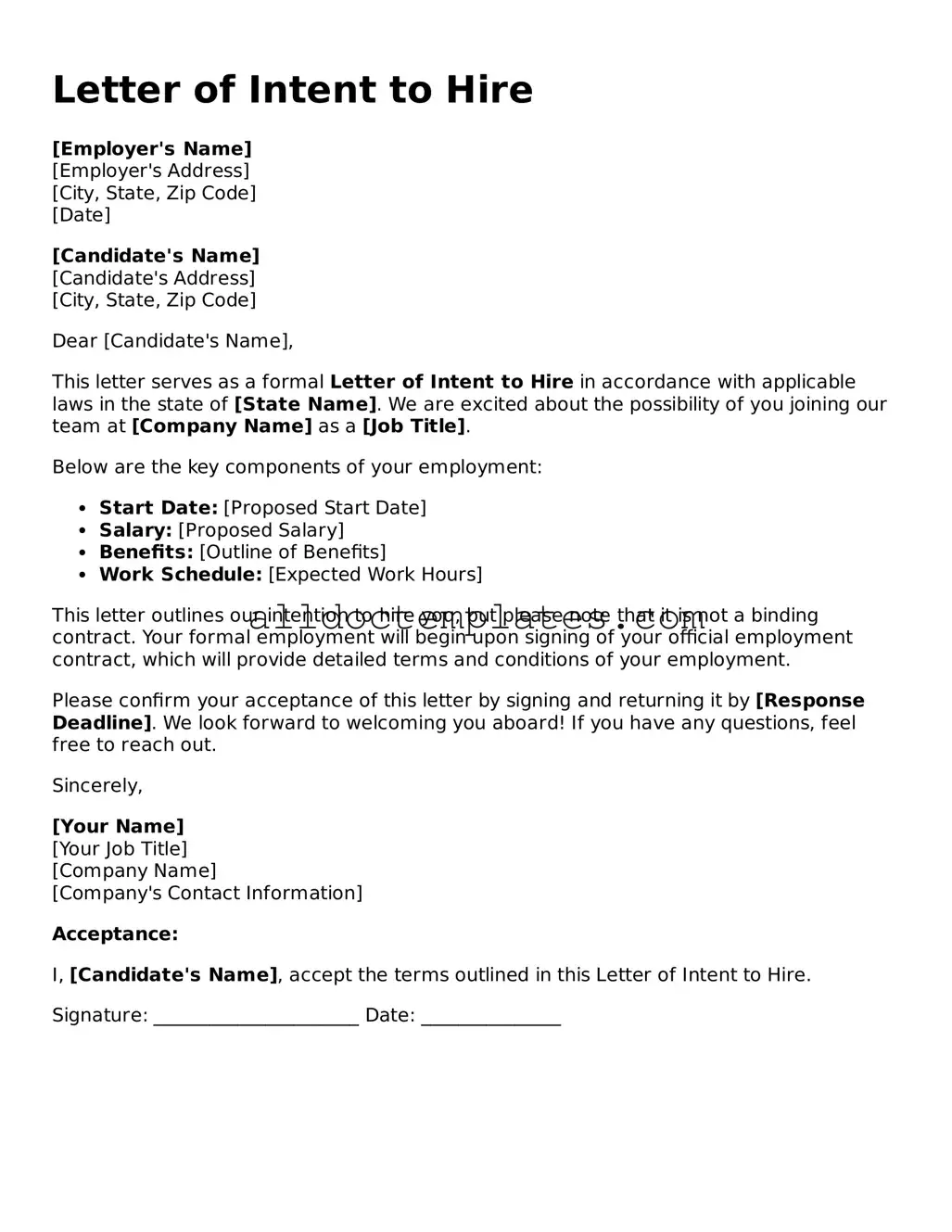Letter of Intent to Hire
[Employer's Name]
[Employer's Address]
[City, State, Zip Code]
[Date]
[Candidate's Name]
[Candidate's Address]
[City, State, Zip Code]
Dear [Candidate's Name],
This letter serves as a formal Letter of Intent to Hire in accordance with applicable laws in the state of [State Name]. We are excited about the possibility of you joining our team at [Company Name] as a [Job Title].
Below are the key components of your employment:
- Start Date: [Proposed Start Date]
- Salary: [Proposed Salary]
- Benefits: [Outline of Benefits]
- Work Schedule: [Expected Work Hours]
This letter outlines our intention to hire you, but please note that it is not a binding contract. Your formal employment will begin upon signing of your official employment contract, which will provide detailed terms and conditions of your employment.
Please confirm your acceptance of this letter by signing and returning it by [Response Deadline]. We look forward to welcoming you aboard! If you have any questions, feel free to reach out.
Sincerely,
[Your Name]
[Your Job Title]
[Company Name]
[Company's Contact Information]
Acceptance:
I, [Candidate's Name], accept the terms outlined in this Letter of Intent to Hire.
Signature: ______________________ Date: _______________
